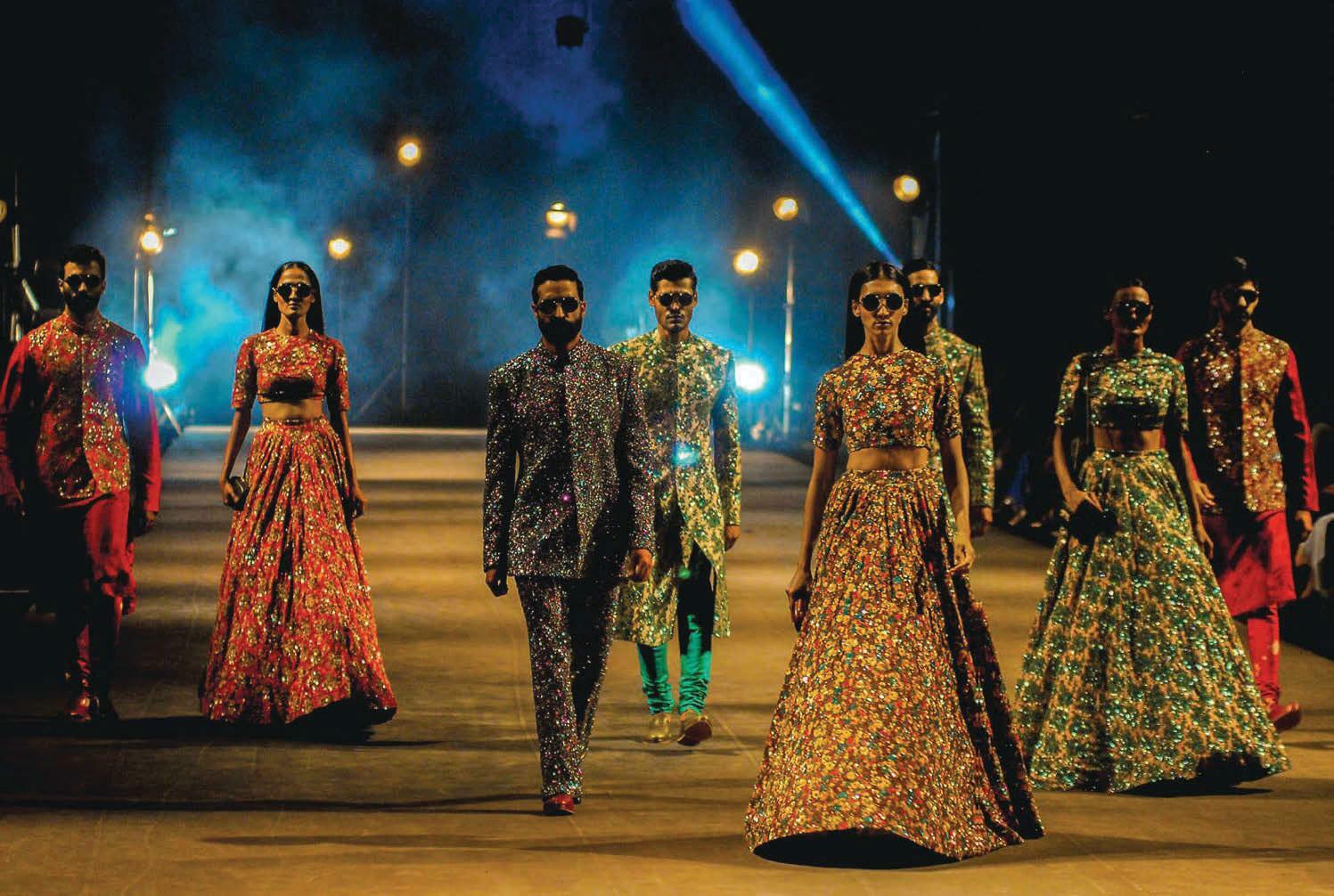Versuchen GOLD - Frei
LORD OF THE LUXE
THE WEEK India
|January 19, 2025
Twenty-five years on, and with a ₹500 crore turnover, Sabyasachi Mukherjee has built India's biggest luxury brand. The next 25, he wants to take it global

I ’m going to tell you a story no more than five people in the Indian fashion industry know. In 2015, as part of Lakme Fashion Week’s advisory board, I had suggested keeping the opening show for a Mumbai designer instead of one of the celebrity names from Delhi. These were the days when Lakme and Fashion Design Council of India (FDCI) had split, and the industry was cleaved into two. A month before the show, the Mumbai designer callously called saying he wanted to opt out. The organisers were in a fix. Who would they find to create 50 spectacular garments in 30 days and put together a theatrical show? They called Sabyasachi Mukherjee.
Those days the fashion week would offer a designer ₹25 lakh to put together the show. Mukherjee added ₹40 lakh of his own, and gave Mumbai the most beautiful fashion show it had ever seen. The old Richardson & Cruddas foundry—where it was held—was decorated like a luxurious red-gold Mughal canopy with a 200-foot runway (a regular size is 50 feet), had antique chairs for seats, and used a drone camera for the first time.
This generosity is unarguably what has made him India’s most successful luxury brand today, going by revenue alone. To call Mukherjee just a designer is a bit of a short-change; he has successfully annexed newer businesses such as jewellery, leather goods, and home interiors. His company will have a turnover of 500 crore this year, his 25th year in the business.
 I would even say if you need to understand how to create a fine luxury business, out of India or anywhere in the world, look at Sabyasachi. If you need to grasp how magnificent India’s fashion industry is, and how gorgeous and artistic its retail environment can be, look at Sabyasachi.
I would even say if you need to understand how to create a fine luxury business, out of India or anywhere in the world, look at Sabyasachi. If you need to grasp how magnificent India’s fashion industry is, and how gorgeous and artistic its retail environment can be, look at Sabyasachi. Diese Geschichte stammt aus der January 19, 2025-Ausgabe von THE WEEK India.
Abonnieren Sie Magzter GOLD, um auf Tausende kuratierter Premium-Geschichten und über 9.000 Zeitschriften und Zeitungen zuzugreifen.
Sie sind bereits Abonnent? Anmelden
WEITERE GESCHICHTEN VON THE WEEK India

THE WEEK India
Embracing difference
Neurodivergence is a natural variation in human brain function and, when necessary, a medical condition requiring support
6 mins
August 03, 2025

THE WEEK India
Class act
How four friends made a film that failed at the box office, but sparked a social change across the country
7 mins
August 03, 2025

THE WEEK India
WRONG SIDE OF THE TRACKS
In 2024, close to 15,000 children were rescued from railway stations across the country—a threefold increase from 2020
6 mins
August 03, 2025

THE WEEK India
HELTER-SHELTER
From caste-based exclusion to glaring infrastructure gaps, Gujarat's anganwadi centres are failing the very children they are meant to serve
7 mins
August 03, 2025

THE WEEK India
The gift of a lifetime
Some gifts are quiet. They are not wrapped or celebrated, but they carry the power to change everything. Organ donation is one such gift—a silent act of generosity that gives another person the chance to live.
2 mins
August 03, 2025

THE WEEK India
In defence of freebies
Recently, the Bihar government announced free electricity for household consumption of up to 125 units per month.
3 mins
August 03, 2025

THE WEEK India
MAKING WAVES
Remembering how Rita Mukherjee nurtured a radio station Indira Gandhi launched exclusively for and by the youth
4 mins
August 03, 2025

THE WEEK India
Sop Opera
Nitish Kumar is hoping freebies will translate into votes, but he faces a dual challenge—voter list revision debate and coalition drama
4 mins
August 03, 2025

THE WEEK India
WAR BY ALL MEANS
To prevent attacks like Pahalgam, India needs to dismantle cross-border terror camps, expose Pak army's role, intensify counter-terror ops and upgrade surveillance against evasive communication equipment
3 mins
August 03, 2025

THE WEEK India
Hot scene and Coldplay
The heat is on! The historic Coldplay concert at the Gillette Stadium in the US will go down as one of the most memorable music events in recent times. And the achievement has nothing to do with music! The global controversy has to do with an incriminating image flashed on a jumbo screen during the show. The villain is technology, and a device called the 'kiss cam' widely used during concerts to capture candid shots of canoodling couples. It is seen as a harmless distraction—a gimmick nobody takes seriously.
2 mins
August 03, 2025

